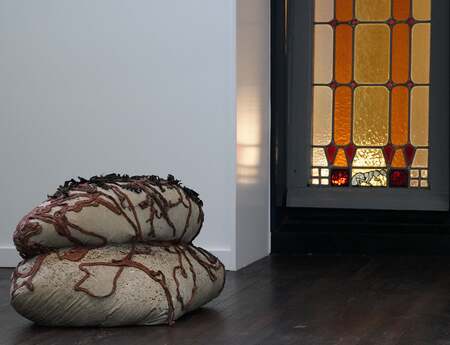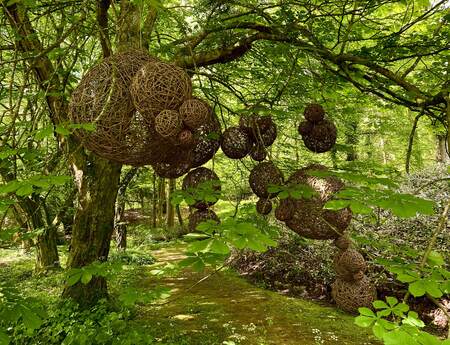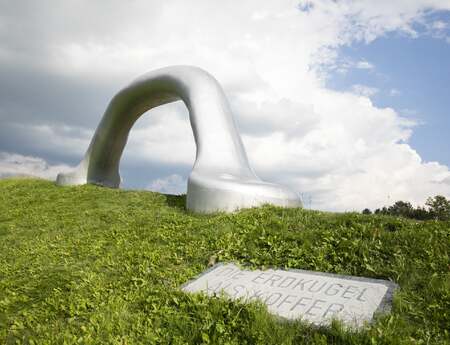Fossil Free Culture: Cleaning Museums of Fossil Fuel
When the art collective Fossil Free Culture NL (FFC NL) presents itself to an art institution it is strong in its messaging. For their first performance at the Concertgebouw in Amsterdam, titled Writing on the Wall (January 2019), three performers pressed their bodies dripped in black liquid against the windows of the entrance hall right before the start of a concert. FFC NL clearly made their presence known to the public as well as to the workers of the Concertgebouw while alluding to the oil that was already smeared on the walls of the building by the sponsorship of the fossil fuel company Shell.
In the past years the collective FFC NL, made up of artists, activists, researchers and critics working at the intersection of art and climate activism, has set itself the goal of breaking the ties between the sponsorships of the fossil fuel industry and art institutions. Through their performative interventions it has succeeded in persuading the Van Gogh Museum, the Concertgebouw and the NEMO Science Museum in Amsterdam to end their collaboration with the fossil fuel comp
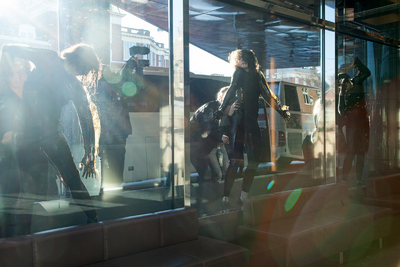
any Shell. Currently it is working on breaking the sponsorship of the Groninger Museum with the Dutch gas companies Gasunie and GasTerra. These achievements are to be seen as a great success within the climate activist movement to which FFC NL has close ties. The withdrawal of these prestigious and influential art institutions from sponsorship contracts with Shell has deprived the fossil fuel industry of one of the opportunities to polish its image through art and culture.
A new Institutional Critique
These performances criticising the museum and society at large are by no means new and have a long standing tradition within the artworld. As an art practice FFC NL draws strongly from the art movement known as Institutional Critique. However, there is a departure from the first wave of Institutional Critique from the 60’s and 70’s, where artists still sought to integrate their art into the institution. The art collectives of the current wave still relate to the institutional context, but no longer believe that such space could provide refuge.
As the art sociologists Joanna Figiel and Stevphen Shukaitis put it:
“The Institution has become a space that one might be temporarily within, but not a place that one could be of, it might be a resting place, but it cannot be a home.”1
So after FFC NL has achieved its intention and the art institution in question has terminated the sponsorship contract with the oil company, the group holds a celebration in front of the institution with speeches, confetti and drinks. Then they leave the art institution to its own dealings.
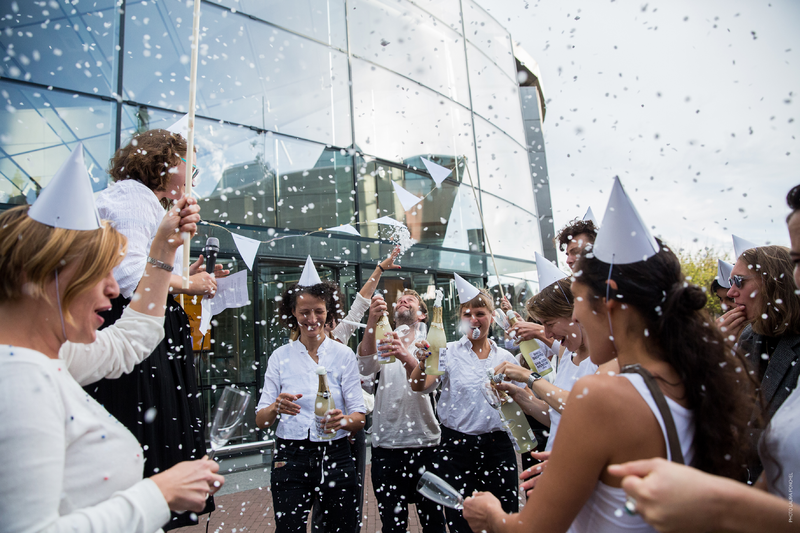
Thus, the FFC NL becomes a looming presence for these art institutions and the institution in question is expected to address its actions. Larger questions however are concealed behind FFC NL’s artistic expressions. It is described by Yates McKee, writer of the book Strike Art: Contemporary Art and the Post-Occupy Condition that next to encompassing the activist art collective’s initial concerns, it also reveals the inequities and complicities of the global ultra luxury economy more generally. This includes the role of art institutions in the process of gentrification, the cooperation of museums with banks and fossil fuel companies, the exploitation of the legions of precarious and low-wage workers who make the art system run, and the persistent hand-wringing on the part of artists and institutions.2
It is becoming clear that the FFC NL is confronted with a far more complex neoliberal capitalist system than just a few art institutions. In order to consolidate its position, the group must therefore show solidarity with other collectives and initiatives committed to the political struggle inside and outside the art world.
Collaborations spanning the globe
FFC NL collaborates with various other art collectives operating on the border between art and climate activism, such as BP or not BP? (UK), Culture Unstained (UK), Libérons le Louvre (France), Stopp oljesponsing av Norsk Kulturiv (Norway), Occupy Museums (USA) and The Natural History Museum (USA).3 These art collectives have a lot in common. They usually criticise the same kind of prestigious public art institutions funded by national fossil fuel companies and use the same methods of intervention and unexpected performances to invade art institutions and make their point. The only difference is that they operate in different countries.
Moreover, the collaboration with some collectives reveals that the political goals of these organisations go far beyond environmental politics. Occupy Museums, for example, grew out of the Occupy Movement and is also concerned with economic inequalities, the ever-increasing prices on the art market and the staggering debts that artists face.4 The Natural History Museum is as concerned with environmental issues as it is with indigenous peoples who are protecting and fighting to maintain their land.5 These connections are not peculiar considering how closely environmentalism, colonialism and labor politics are intertwined.
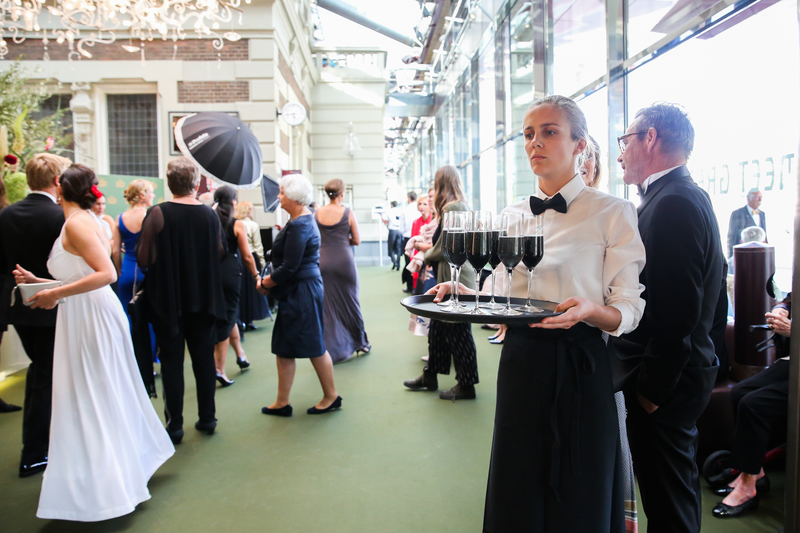
Watermelon politics, broadening the objective
FFC NL is conscious of the disparity that exists between their own organisation, which relies almost entirely on volunteers, and those they are messing with, the rich fossil fuel companies and prestigious art institutions that are abundant in resources. It is something they played with in their performance Dissonance Act 1 Season Opening (September 2019) at the Concertgebouw, where the performers appeared as staff serving "oily" non-alcoholic drinks in champagne glasses to VIP guests. Curiously, many of the guests grabbed the "dirty" drinks from the trays of the FFC NL performers and drank them without even noticing the person in front of them or paying any attention to what was being offered. Revealing the lavish comfort these institutions provide their guests with, which makes them literally incapable to look further than beyond the end of their nose.
This brings us to watermelon politics, a term coined by Figiel and Shukaitis. They make the observation that many of these art collectives active in environmental activism are on the outside concerned with issues of ecology and sustainability (the green skin of the watermelon), but at a deeper level they are also concerned with socialist issues relating to labour and production (the red flesh inside the watermelon). Besides the red, Figiel and Shukaitis continue, the colour inside the watermelon can be black, purple, pink, a whole patch of different colours.6 The only criticism we might have of the watermelon metaphor is that you first have to carve it open in order to see what politics lay within.
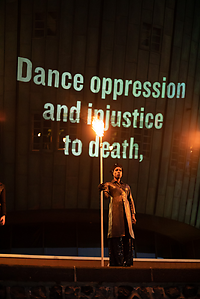
1 Figiel, Joanna, and Stevphen Shukaitis,“Watermelon Politics and the Mutating Forms of Institutional Critique Today” from Who Runs the Artworld: money, power and ethics (ed. Brad Buckley and John Conomos), Faringdon, Oxfordshire : Libri Publishing, 2017: p. 216
2 McKee, Yates, Strike Art: Contemporary Art and the Post-Occupy condition, London : Verso, 2016: p. 179
3 Fossil Free Culture, About us: https://www.fossilfreeculture.nl/about/
4 Occupy Museum, Debtfair New Mexico: http://www.occupymuseums.org
5 The Natural History Museum: http://thenaturalhistorymuseum.org
6 Figiel, Joanna, and Stevphen Shukaitis, p. 214-215



